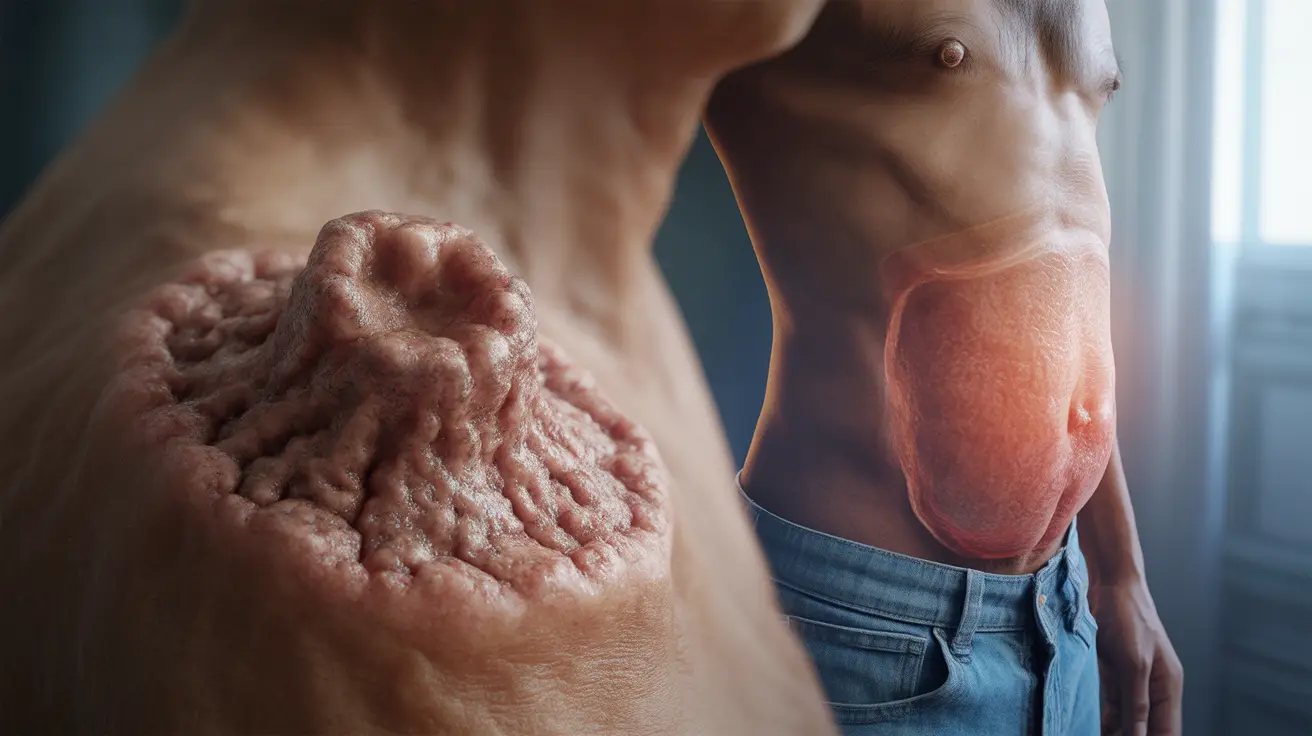Black bumps appearing on the skin can be concerning, especially when you're unsure about their cause or potential health implications. One common condition that causes these dark spots is dermatosis papulosa nigra (DPN), a benign skin growth that primarily affects people with darker skin tones. Understanding this condition is crucial for proper diagnosis and treatment.
While these skin changes can be worrying, it's important to know that they're generally harmless and can be managed effectively with various treatment options. Let's explore everything you need to know about these characteristic black bumps on the skin, from their causes to available treatments.
Understanding the Condition
Dermatosis papulosa nigra produces small, dark, raised spots that typically appear on the face, neck, and upper chest. These growths are similar to seborrheic keratoses and are actually benign proliferations of skin cells. The bumps usually start small but can grow larger over time and increase in number as a person ages.
Who Is Most Affected?
This condition shows a strong genetic predisposition and predominantly affects:
- People of African, Asian, or Caribbean descent
- Individuals with darker skin types (Fitzpatrick skin types IV-VI)
- Adults over 20 years of age
- Women more commonly than men
Characteristics and Symptoms
The distinctive features of these black bumps include:
- Small, round, or oval-shaped growths
- Smooth, dark brown to black coloration
- Size ranging from 1-5 millimeters
- No pain or discomfort
- Tendency to appear in clusters
- Most common on the cheeks and around the eyes
Treatment Options
Professional Medical Treatments
Several professional treatment options are available for removing these black bumps:
- Cryotherapy (freezing)
- Electrodessication (burning)
- Laser therapy
- Curettage (scraping)
At-Home Care
While professional treatment is recommended for removal, you can practice good skin care by:
- Keeping the skin clean and moisturized
- Avoiding picking or scratching at the bumps
- Using gentle skincare products
- Protecting your skin from excessive sun exposure
When to See a Healthcare Provider
Consider consulting a dermatologist if you:
- Notice rapid changes in existing bumps
- Experience unusual symptoms like bleeding or itching
- Want to explore removal options
- Are unsure about the diagnosis
Frequently Asked Questions
What causes black bumps on the skin known as dermatosis papulosa nigra and who is most likely to develop them? Dermatosis papulosa nigra is primarily caused by genetic factors and aging. It most commonly affects people with darker skin tones, particularly those of African, Asian, or Caribbean descent, and typically develops after puberty.
How can dermatosis papulosa nigra (black bumps on the skin) be safely treated or removed? These bumps can be safely removed through various medical procedures including cryotherapy, electrodessication, laser therapy, or curettage. These treatments should only be performed by qualified healthcare professionals to minimize scarring and ensure safety.
Are black bumps from dermatosis papulosa nigra harmful or a sign of a serious skin condition? No, dermatosis papulosa nigra is completely benign and not indicative of any serious health condition. The bumps are harmless growths that don't require treatment unless they cause cosmetic concerns.
What are the risks and side effects of treatments like laser therapy, cryotherapy, or electrodessication for dermatosis papulosa nigra? Potential side effects may include temporary skin discoloration, mild scarring, or changes in skin texture. People with darker skin should be particularly careful as they may be more prone to post-inflammatory hyperpigmentation.
Can dermatosis papulosa nigra be prevented or will new bumps continue to appear over time? While the condition cannot be prevented due to its genetic nature, new bumps may continue to develop over time. Regular treatment sessions may be needed to manage new growths as they appear.




